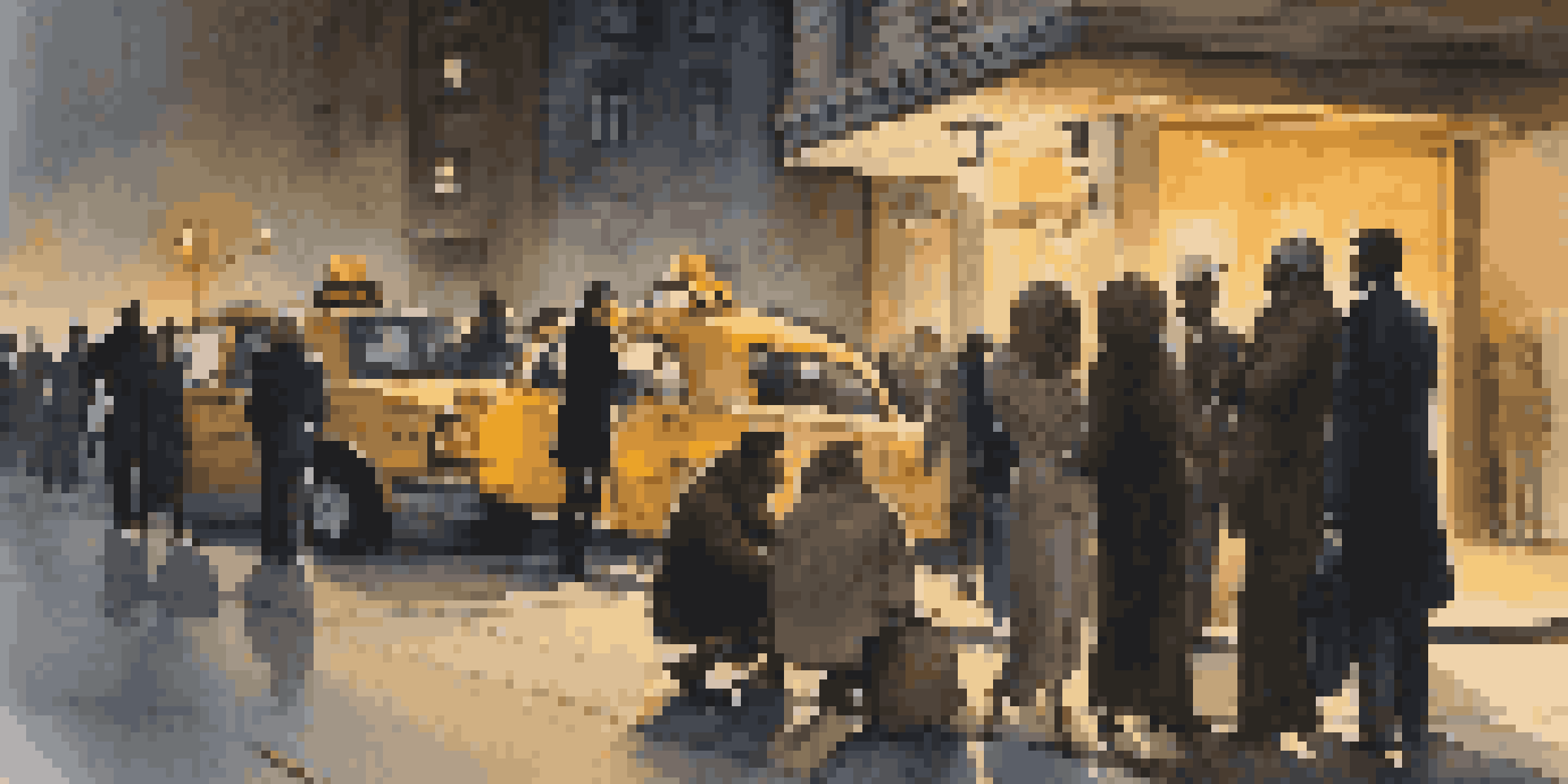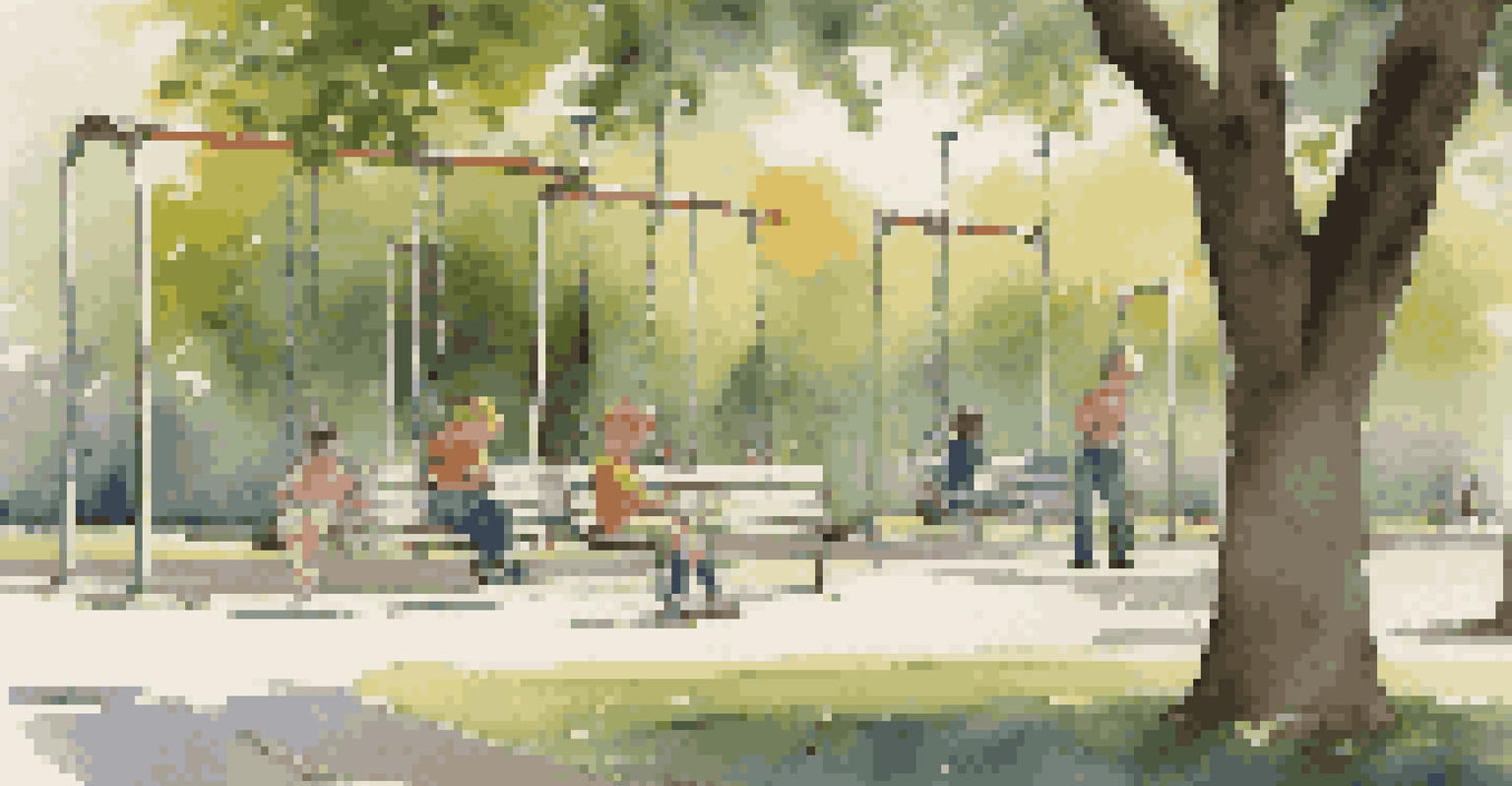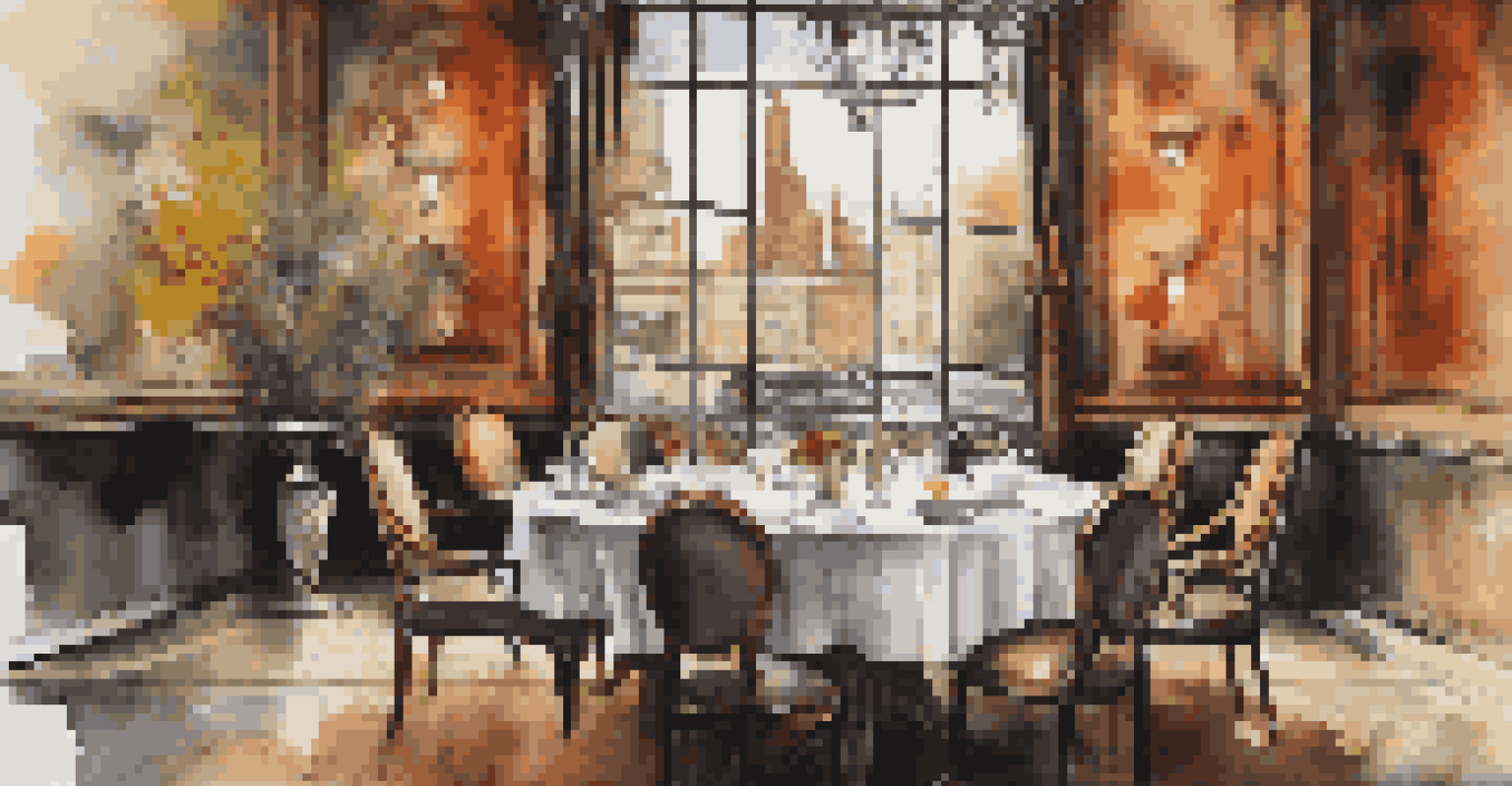Visual Irony: The Role of Humor in Photojournalism

Understanding Visual Irony in Photojournalism
Visual irony occurs when an image presents a stark contrast between what is expected and what is actually depicted. It often reveals deeper truths about society or human nature, making us pause and reflect. In photojournalism, this technique can challenge viewers' perceptions and provoke thought, often leading to a mix of emotions, including humor.
A picture is worth a thousand words, but a photo that evokes humor can spark a million conversations.
By using visual irony, photojournalists can highlight absurdities in everyday life, creating a powerful narrative that resonates with audiences. For example, a photo capturing a lavish party in the background of a homeless individual can evoke both laughter and sadness. This duality is what makes visual irony a compelling tool in storytelling.
Ultimately, visual irony invites viewers to question reality and engage with the subject matter on a deeper level. It encourages us to find humor in difficult situations, reminding us that laughter can coexist with sorrow. This unique blend is what sets apart impactful photojournalism from mere documentation.
The Role of Humor in Engaging Audiences
Humor has a remarkable ability to draw people in, making them more receptive to the messages being conveyed. In photojournalism, when humor is employed through visual irony, it not only entertains but also provokes critical thinking. This can lead to a more engaged audience that reflects on the issues presented within the images.

Consider how a photograph of a politician caught in a humorous situation can shed light on their policies or decisions. By highlighting the absurdity of their actions, photojournalists can create a memorable visual that prompts discussions among viewers. This engagement is essential in a world saturated with information.
Visual Irony Engages Viewers
Visual irony in photojournalism contrasts expectations with reality, provoking thought and deeper engagement.
Moreover, humor can act as a coping mechanism, allowing audiences to process complex or sensitive topics. When humor is woven into the narrative, it can soften the blow of harsh realities, making it easier for viewers to digest and discuss difficult subjects. This balance between humor and seriousness is crucial in effective photojournalism.
Examples of Visual Irony in Iconic Photojournalism
Throughout history, numerous iconic photographs have utilized visual irony to convey powerful messages. One famous example is the 'Napalm Girl' photo, which, while deeply distressing, also illustrates the innocence of childhood amidst war. It’s a stark juxtaposition that evokes a range of emotions, including tragic irony that resonates with viewers.
The greatest art is to see the world through the lens of humor, where every serious subject can find a moment of light.
Another example is the image of a lavishly dressed woman trying to catch a taxi while a group of homeless individuals looks on. This visual irony not only highlights social disparities but also adds an unexpected twist that can spark conversation. Such photographs challenge the viewer's assumptions and encourage them to think critically about societal norms.
These powerful images serve as reminders that humor and irony can coexist with serious issues. By presenting these contrasts, photojournalists can engage their audience more effectively, prompting discussions that extend beyond the visual narrative. This multifaceted approach is what makes photojournalism impactful.
The Balance Between Humor and Sensitivity
While humor can enhance photojournalism, it's essential to strike a balance between lightheartedness and sensitivity. Not all subjects lend themselves to humor, and photojournalists must be careful not to trivialize serious issues. This is where understanding context and audience becomes crucial in creating impactful narratives.
For instance, using humor in a story about a natural disaster can risk coming off as insensitive. Photojournalists must navigate these waters thoughtfully, ensuring that the humor enhances rather than detracts from the gravity of the situation. It's about finding the right moment and the right subject for visual irony to shine.
Humor Balances Serious Topics
Utilizing humor can soften the impact of difficult subjects, making them more approachable for audiences.
Ultimately, the key lies in empathy—understanding the stories behind the images and respecting the experiences of those portrayed. By approaching their work with care and consideration, photojournalists can effectively use humor without crossing the line into insensitivity.
Cultural Context: Humor's Variability
Humor is not universal; it varies greatly across cultures and contexts. What might be amusing in one culture could be offensive in another, which is a critical consideration for photojournalists working in diverse environments. Understanding these cultural nuances is vital to ensuring that visual irony resonates positively.
For example, a photo that pokes fun at political leaders might be well-received in one country but could lead to backlash in another. Photojournalists must be aware of the cultural implications of their work and how humor is perceived in different societies. This awareness can guide their approach and help them craft narratives that are both engaging and respectful.
By acknowledging cultural differences, photojournalists can create images that foster connection instead of division. This sensitivity not only enhances their work but also builds trust with the communities they depict. When humor is used thoughtfully, it can transcend cultural boundaries and bring people together.
The Future of Humor in Photojournalism
As the media landscape evolves, so too does the role of humor in photojournalism. With the rise of social media platforms, where visual content reigns supreme, the demand for engaging, humorous visuals has increased. This shift presents exciting opportunities for photojournalists to experiment with visual irony in innovative ways.
We are already seeing a trend where humor is being blended with serious journalism, creating content that not only informs but also entertains. This evolution can lead to greater audience engagement, as people are more likely to share and discuss images that elicit a laugh. As a result, photojournalists can reach wider audiences and spark meaningful conversations.
Cultural Sensitivity Is Key
Understanding cultural context is essential for photojournalists to ensure that humor resonates positively and respectfully.
However, with this opportunity comes the responsibility to uphold journalistic integrity. As photojournalists continue to explore humor and visual irony, they must remain committed to truth and authenticity. Balancing creativity with ethical considerations will be key to successfully navigating the future of photojournalism.
Conclusion: The Power of Humor in Visual Storytelling
In conclusion, visual irony and humor play significant roles in photojournalism, offering a unique lens through which to view the world. They invite audiences to engage with complex subjects, encouraging reflection and discussion. By using humor thoughtfully, photojournalists can create narratives that resonate deeply and provoke thought.
As we’ve explored, the balance between humor and sensitivity is crucial, especially in a diverse world where cultural contexts vary. Photojournalists must navigate these landscapes with care, ensuring that their work respects the experiences of those they portray. This mindful approach enhances the power of humor in visual storytelling.

Ultimately, the use of visual irony not only entertains but also serves as a catalyst for conversation and change. As photojournalism continues to evolve, embracing humor will be essential for connecting with audiences and fostering understanding in an increasingly complex world.